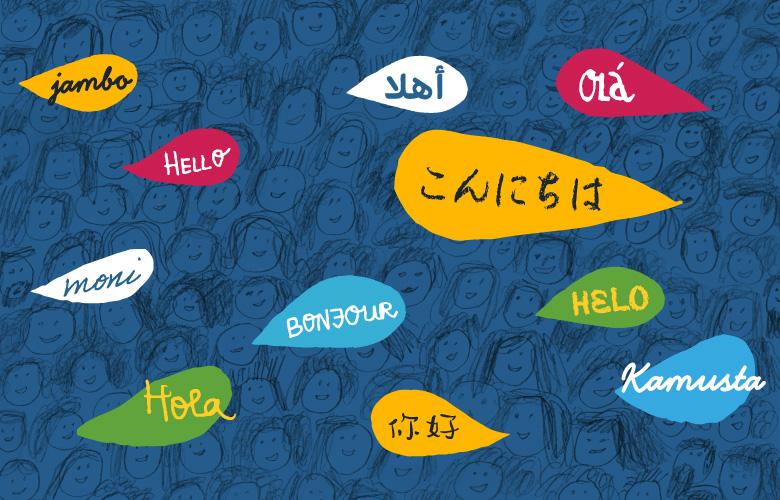
Have you been in situations where everyone around you was speaking a language other than your native or primary language, and you were expected to use that language all the time? The experience can be unsettling, but it is common in a world with more than 6,000 spoken languages.
We use language every day to communicate, express ourselves, and absorb information. It is the lens through which we understand and engage with the world— socially, culturally, academically, and professionally. It gives form to thought, is linked to memory and experience, and shapes our sense of self. In many ways, language is inseparable from identity.
While language is integral to fruitful communication and collaboration, non-dominant linguistic identities are often overshadowed by dominant ones. We adapt, or try to adapt, to communicate in the language of our employer, our funders, our colleagues, our supervisors, and our teachers. We may do so without considering what is lost or misconstrued by not being able to express ourselves in our primary language(s).
Such an unexamined approach to language can lead to unintended consequences that transform communication from an interactive exchange of ideas into one-sided transmissions, partial misunderstandings, and even conflict.
Here are a few tips to help develop a more reflective approach to using language in your education work, your community, and your classroom.
Move beyond basic, last-step translation. While translations increase access to multilingual audiences, they are often conducted as a last step and without consulting the intended audience. Instead, co-develop with speakers native to the intended socio-linguistic contexts, and ensure that your audience’s linguistic identities are represented. Use translations in real-time to open dialogue, rather than as one-way delivery of information.
Build resilience by taking a positive approach to language. Educational organizations and institutions can either build resilience or contribute to trauma, not only by what language is used, but by how that language is used, with employees, colleagues, and most critically, students. Foster mental and emotional safety and resilience in the classroom, community, and workplace, by broadening the scope for multilingual interactions and increasing awareness of cultural diversities and ways of thinking and acting.
Leverage the diverse strengths of multilingual speakers. Staff and students representing non-dominant or less common languages bring cultural, linguistic, academic, and professional strengths, perspectives, and resources that will be a tremendous asset for the organization or classroom context. Enable broader participation in content development and learning opportunities through translation, consultation, and representation. Facilitate strengths-based knowledge and skills exchanges related to context and language integration, cultural expertise, and partnerships with families and communities.
Be candid about your linguistic identity. If your primary language is underrepresented, be open when you struggle with dominant language-only communication. Find ways to be transparent about the language- or code-switching that you are experiencing. Share your interpretation along with how one might approach things differently in your own culture or context.
Take the time to learn another language. The process of learning other languages confers a range of cognitive and social benefits beyond just improving your communication skills. Multilingualism has been shown to improve empathy and foster a deeper understanding of the world around you. Broaden your horizons with new languages and experiences!
Many thanks for the valuable reviewer inputs from the following socio-linguistic contexts: Democratic Republic of the Congo, Mozambique, United States, Yemen, and Zambia.
Although we have used English for this blog post given our language context, please share your comments in the language of your choice.
Stay tuned for more in this series as we highlight examples and lessons learned from EDC’s work worldwide in multilingual contexts.
| Corrie Blankenbeckler is a passionate advocate for multilingual education and has worked for many years to advance multilingual education programs and policies through project design, training, and written research. | |
| Heidi Larson is a long-time advocate for multilingual learners and is keenly interested in the politics of language in policies, education, and services delivered and how technology supports language acquisition. |


Comments
Add new comment